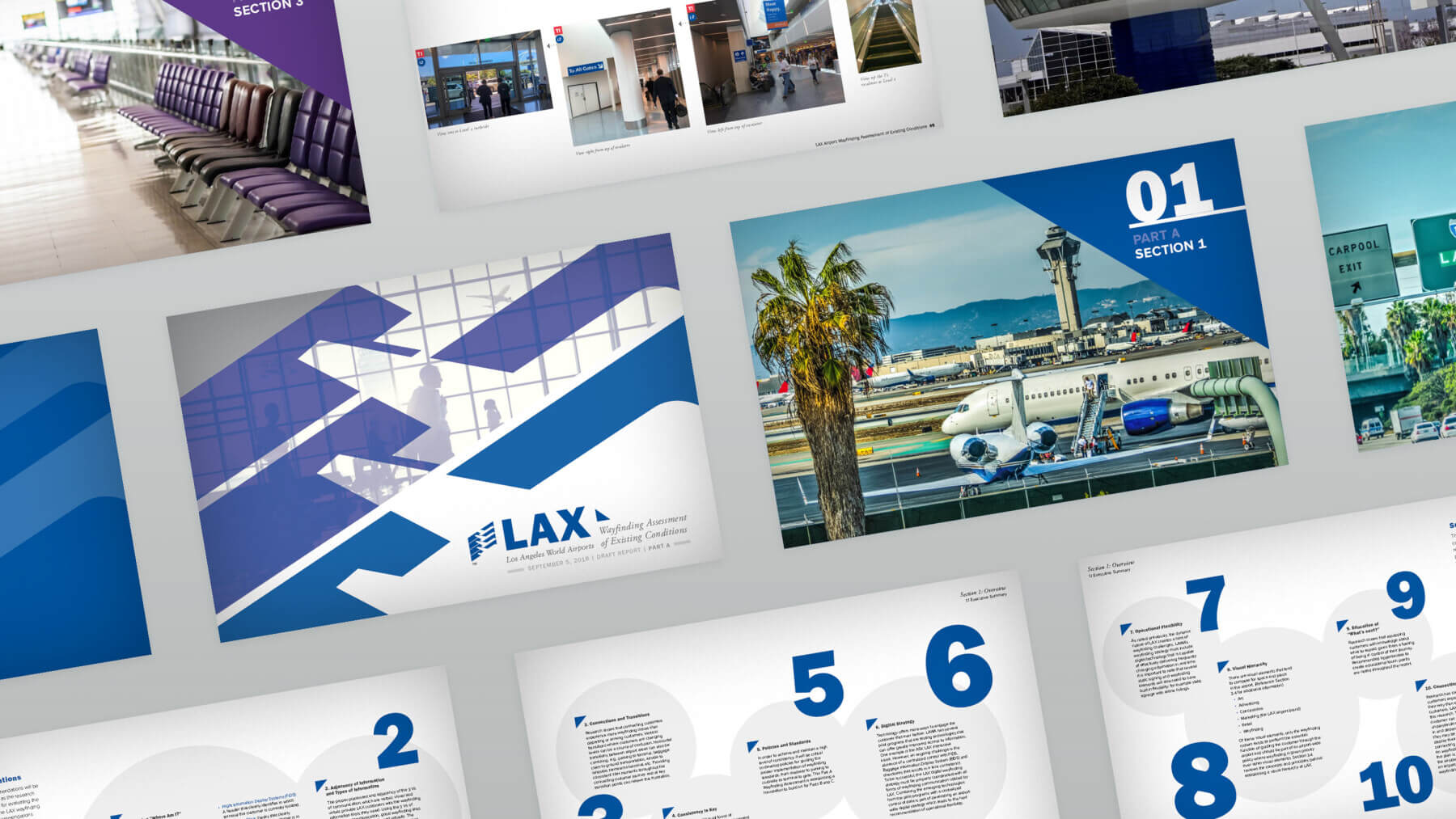Setting the Foundation
To initiate the assessment, we evaluated the airport’s current operations to better understand the journeys of arriving, departing and connecting passengers. From roadways and remote lots to pedestrian walkways and parking structures, it was important to study how each airport element is related and can be linked with wayfinding.
Gresham Smith also researched passenger surveys and complaints to better understand the difficulties they were experiencing and sought to identify gaps in the current wayfinding system. Our team identified and analyzed the non-intuitive journey segments—international to domestic connections and vice versa—and how to avoid penalties associated with long walking distances and convoluted pathways for some connecting passengers.
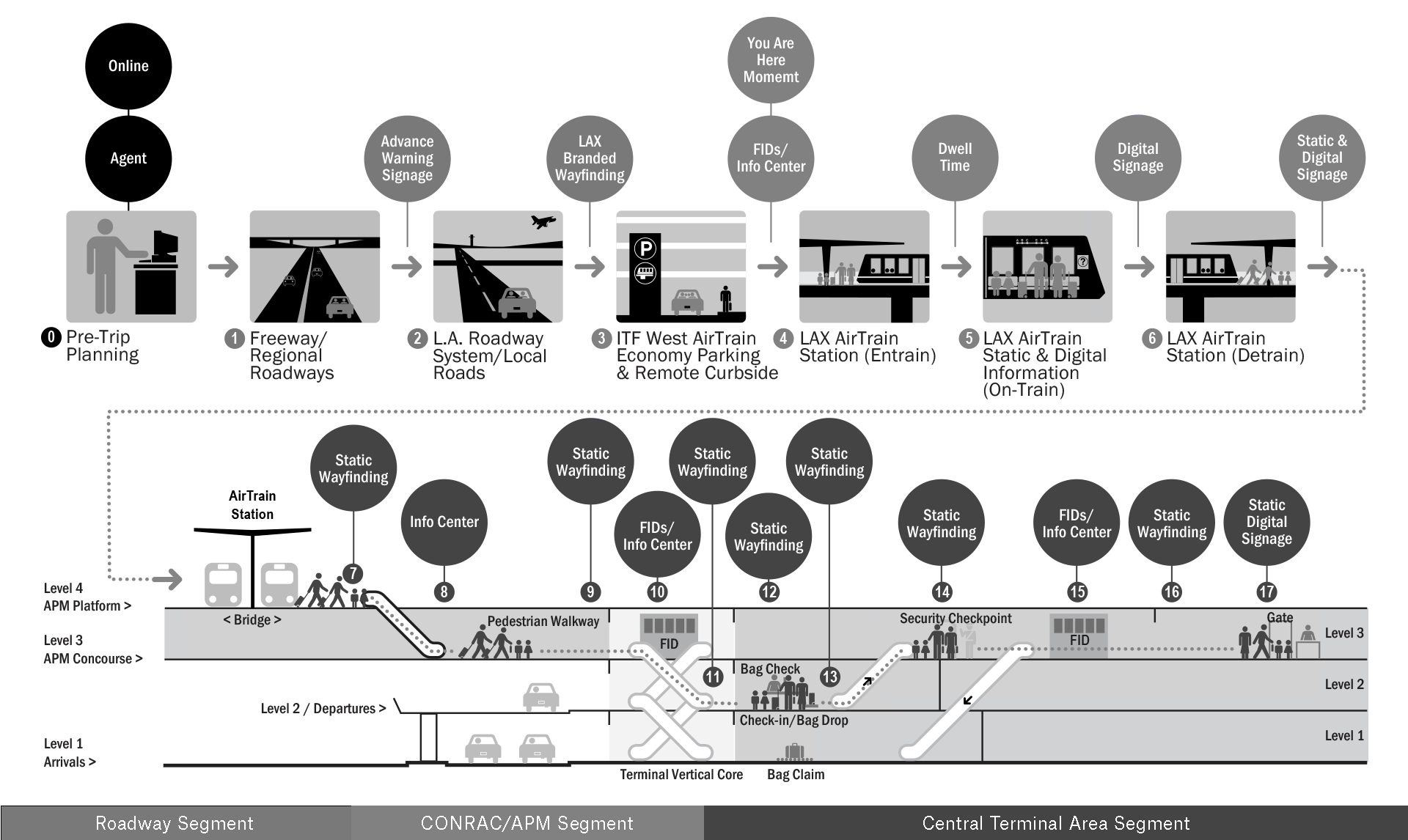
You Are Here
Every “Where am I?” situation needs a “You are here” response. We conducted field observations of the various touchpoints of a passenger’s journey to identify wayfinding issues, opportunities and inconsistencies using a proven process of Look, Listen and Learn. Our team mapped out typical customer journey segments for each area and compared them to how the journey might look in the future as the airport continues to grow and potentially becomes more complex.
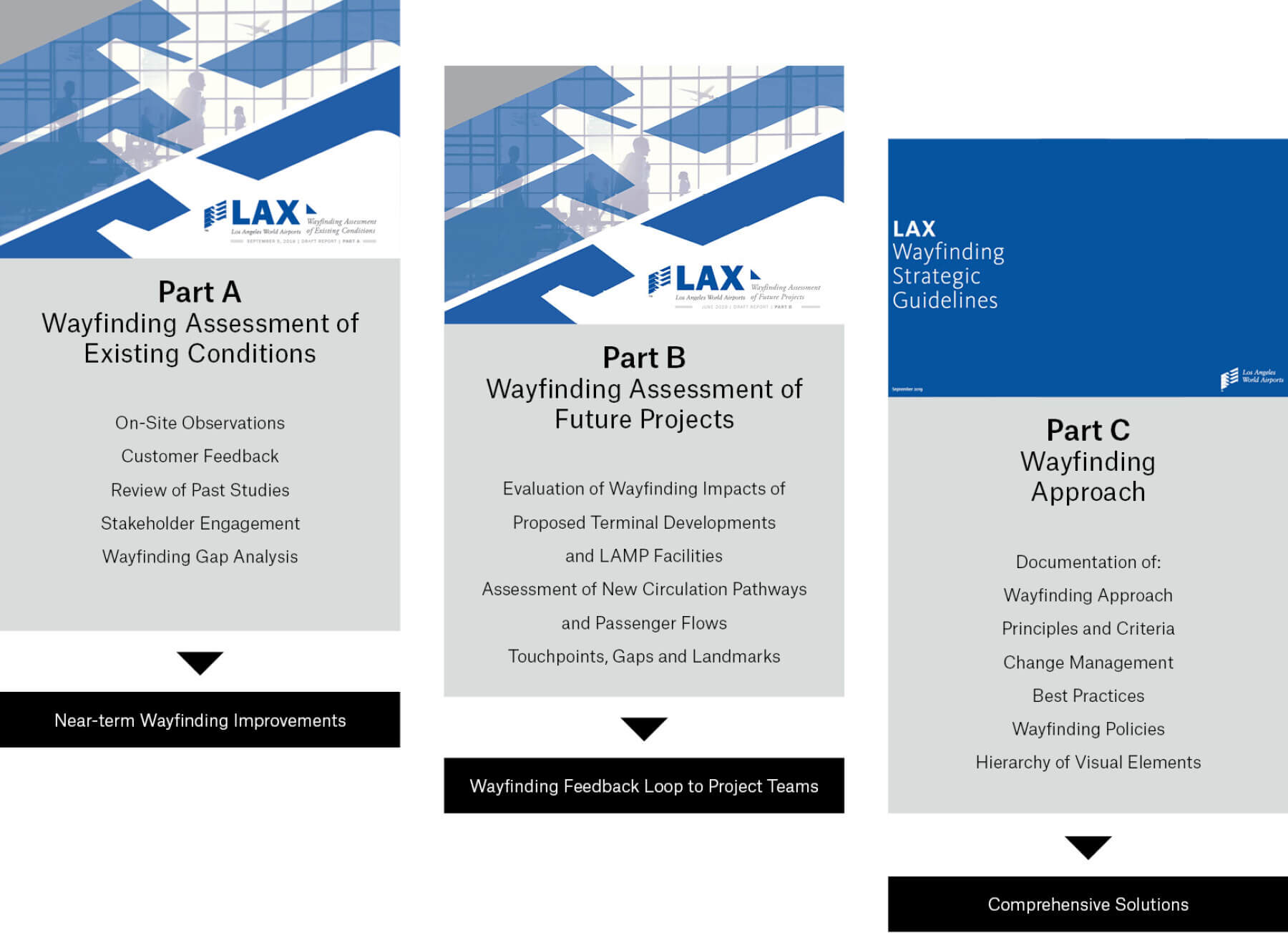
A Three-Part Process
In response to the planned terminal modernizations and other LAMP facilities, we used our observed information to develop eight overarching guiding principles, which translate into airportwide policies. Not only will these foundational principles lead to solutions, but they will also help create consistent wayfinding and signage for years to come.
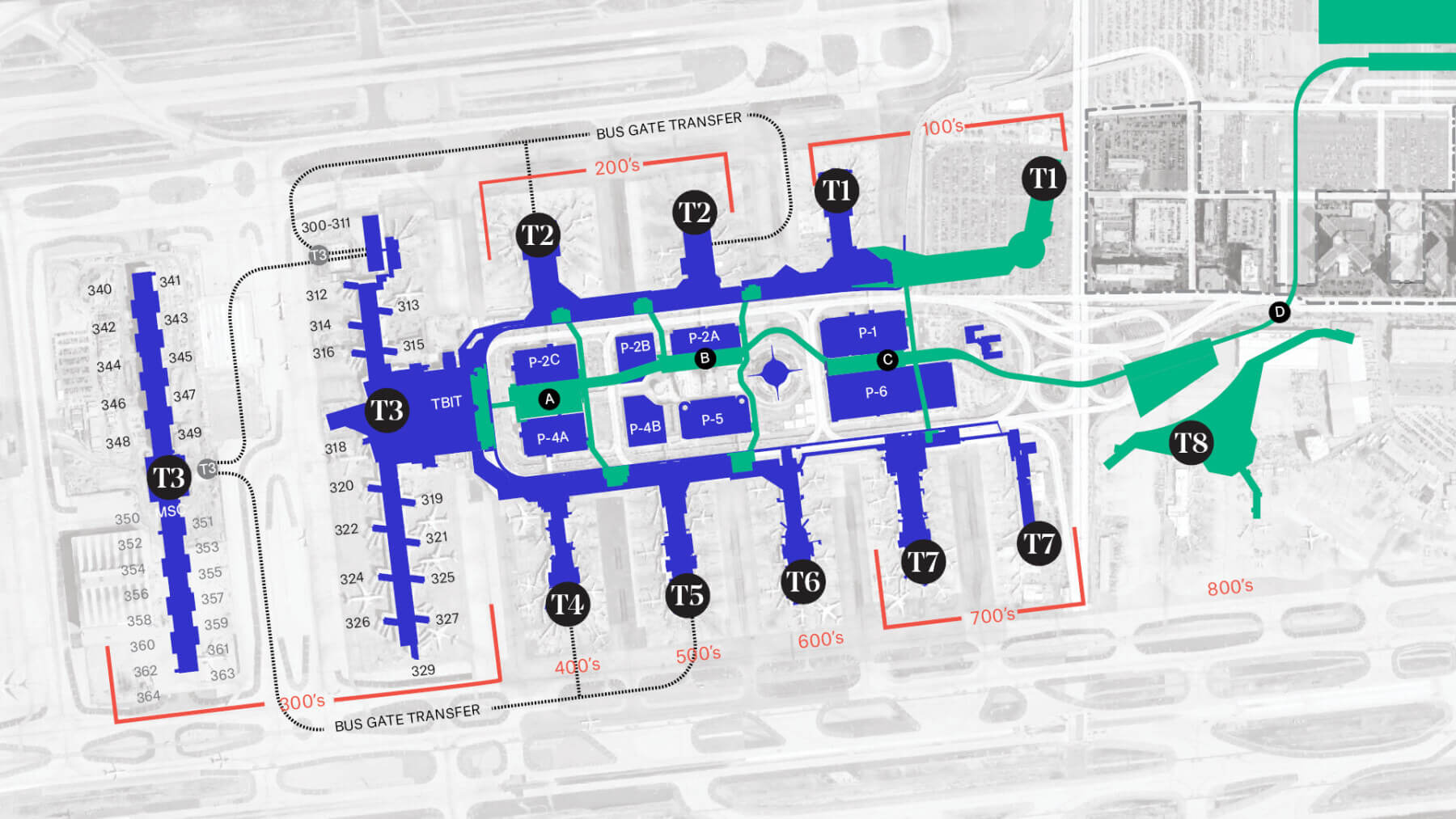
Contiguous Terminal and Gate Numbering
Communication is key when getting a passenger from Point A to Point B. While the signage at LAX typically has the same look and feel and adopts a consistent graphic standard, our assessment found the overall wayfinding communication at LAX to be inconsistent. Our research also revealed that the current wayfinding structure lacked an overarching logic. Our solution? We suggested that all terminal signs, gate signs and flight information display system screens be visually consistent, and based on a simplified logic of a contiguous terminal and gate numbering system.
Creating Visual Hierarchy
Giving customers an unobstructed direct line-of-sight builds intuitive wayfinding confirmation and requires travelers to use fewer directional signs. Avoiding architectural or construction barriers and using glass enclosures for structures, such as elevators, will provide visual confirmation. Additionally, increasing automated people mover station visibility from platforms and terminals will show customers where to go.
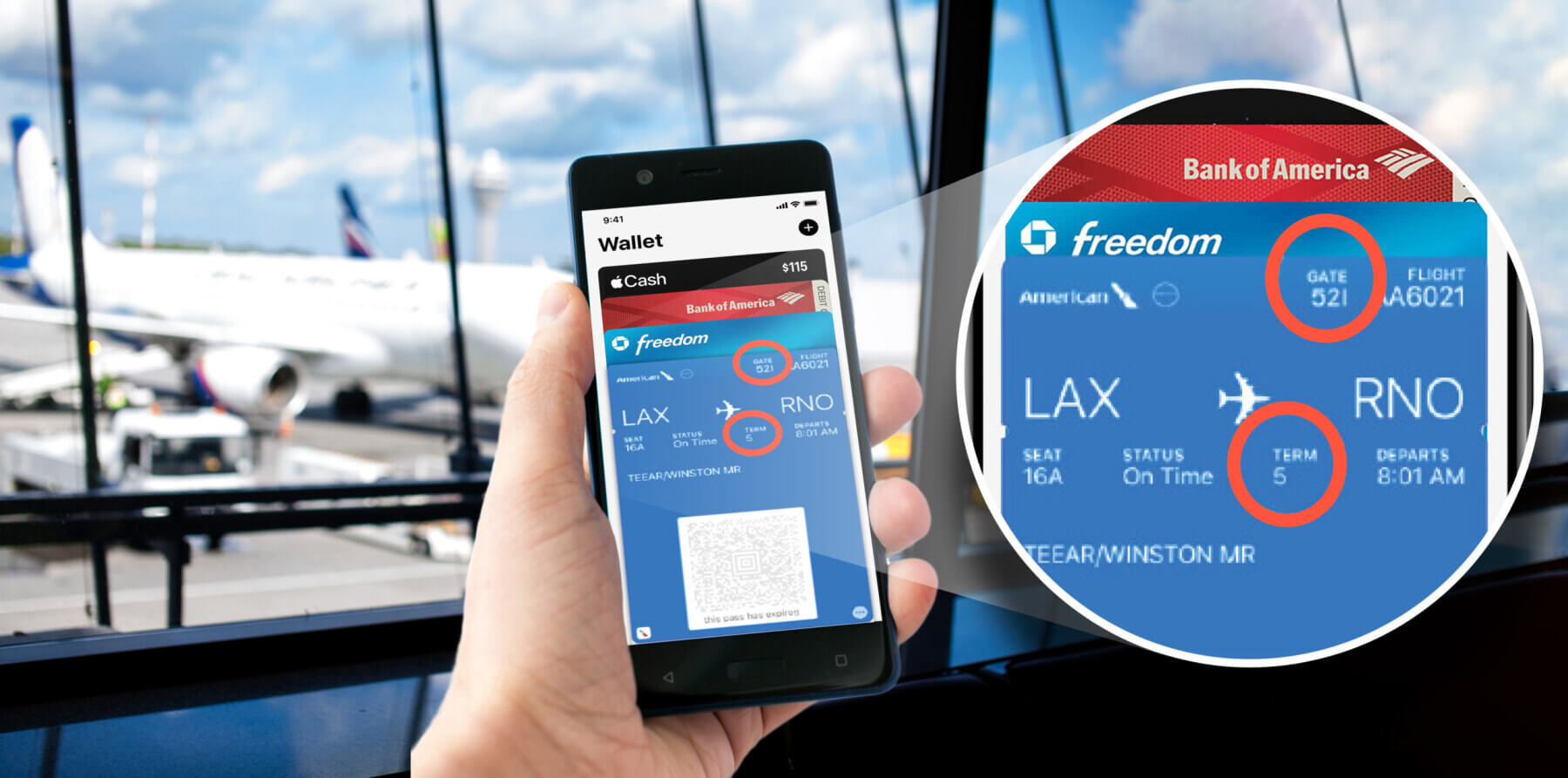
Complementary Approach for Dynamic Wayfinding Information
Operational flexibility with access to real-time information is a fundamental wayfinding component, because change is part of everyday life at airports. On the roadways leading to LAX, dynamic message signs can provide drivers advance notification with alternatives to save time and avoid traffic delays—a big deal in L.A.!
Smart garage content in the central terminal area (CTA) parking structures and in the new economy garage will provide advance notification, allowing customers to make informed decisions and avoid overflow conditions that only add to CTA congestion.
The LAX Air Train will have three stations serving nine terminals that raises the question: Which station is the correct station? Airlines move and flight status can change, which requires operational flexibility in real time so passengers know what station to use through flight information displays and directory maps that always display up-to-date airline information. Capitalizing on these and other key touchpoints will deliver wayfinding information that will better inform and engage the LAX customer.
